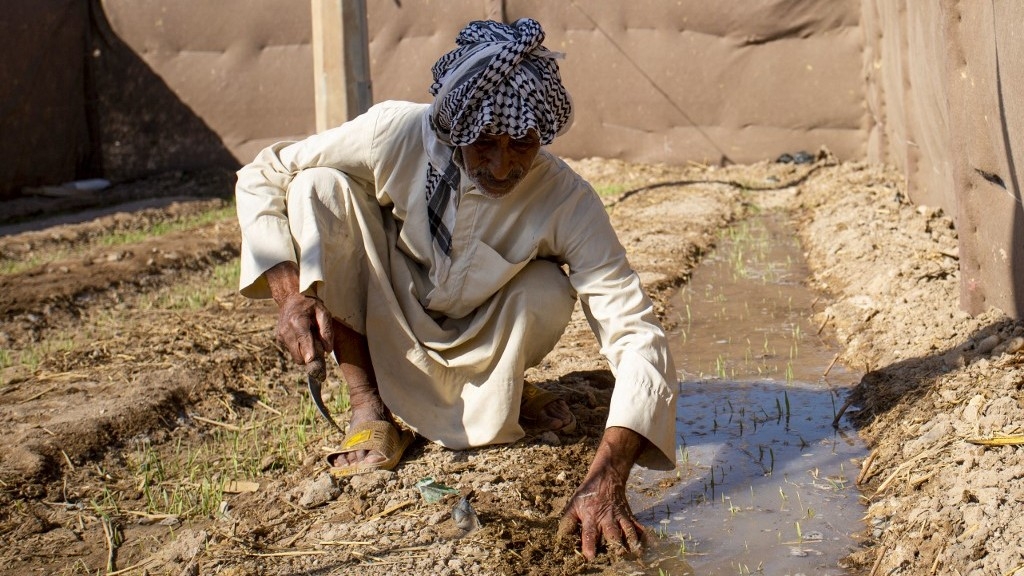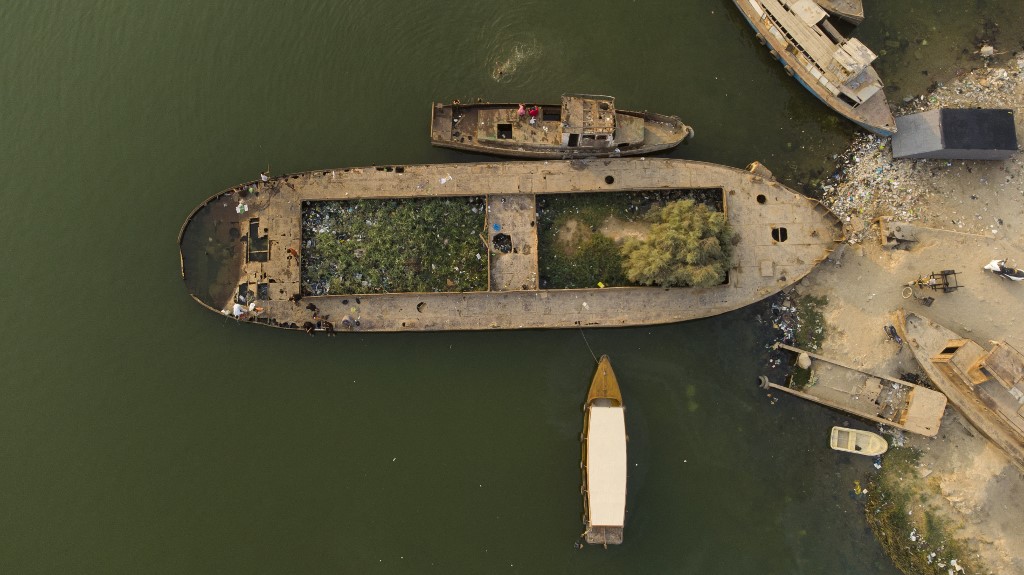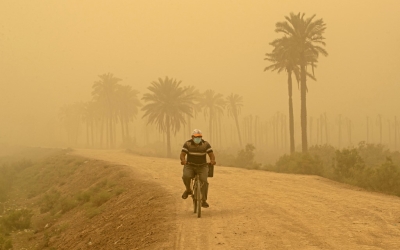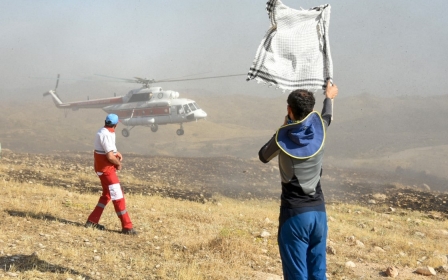Iraq: Reconsidering the impact of global warming in Basra

“Why would I invest in the necessary maintenance work to unclog irrigation channels from the Shatt al-Arab river? I would not make one dinar out of a truckload of dates,” said Abbas, a 45-year-old resident of Hartha, Iraq, located in the Basra governorate.
He looked from me, to a spattering of sorb-apple trees, to the smoke from burning oil wells on the horizon, and back again. “There is no more agriculture in Basra,” he said. “We all stopped shortly after 2003. Now, we have government jobs and shops in town.”
Breaking into guileless laughter, he added: “And as far as I’m concerned, I’m better off running other kinds of business.”
Because Iraqi agriculture is no longer competitive, farmers have gradually sought other sources of income
In recent years, a flurry of reports from international organisations has highlighted the environmental crisis in Basra.
The general narrative is that the climate-change-induced decrease in agricultural production has triggered a massive migration to urban areas, resulting in the uncontrollable growth of informal settlements. Access to water is portrayed as the main driver of conflicts, often tribal-related, in the governorate.
New MEE newsletter: Jerusalem Dispatch
Sign up to get the latest insights and analysis on Israel-Palestine, alongside Turkey Unpacked and other MEE newsletters
Without question, the increased frequency of droughts has had a detrimental effect on economic activity in Iraq, while agricultural production has been severely impacted by water shortages. The drop in Shatt al-Arab’s water levels directly affects local communities, while temperatures soar during summer months.
Yet, the consequences of global warming on human mobility in Basra must be reassessed. Intertwined political, economic, and demographic factors largely account for the gradual disappearance of productive agriculture since 2003. Rural-urban migration and the problem of Basra’s slums predate the worsening of climate change in recent years.
Waves of migration
Contrary to other urban areas in Iraq, Basra no longer attracts migration from the countryside. Unskilled labourers seeking temporary employment do not have a lasting effect on the urban structure of Basra, because workers do not permanently resettle in the city.
Failed water and agricultural management in Amarah and Kut in particular have triggered successive migratory waves of former sharecroppers to Basra. According to British and Iraqi archives, in 1958, reed shacks erected on state-owned land posed major health and social challenges, while subsequent low-cost housing projects allowed resettlement to residential complexes, most famously in Hayaniyya.
Throughout the second half of the 20th century, job opportunities continued to attract unskilled workers, despite land reform schemes designed to curtail the rural exodus. In the 1990s, the drying of Iraq’s wetlands led to further major demographic disruptions.
Because Iraqi legislation, which was issued in the framework of the land reform law 117 of 1970, forbids the construction of residential buildings on agricultural land, urban growth in Iraq remained limited until 2003.
Newcomers from the countryside were forced to move in with relatives in cramped quarters. Many countryside dwellers had also sought refuge inside the city of Basra because of protracted tribal feuds in their areas of origin, according to field interviews conducted in Basra's slums in December 2021 and March 2022.
With the turmoil stirred up by the collapse of the Baathist regime in 2003, powerful armed groups systematically appropriated vacant land. State-owned land was divided up into small plots and sold to impoverished populations, who built houses on it. Ramshackle dwellings sprung up along riverbanks and roads.
Outside the city of Basra, accelerated urbanisation resulted in the near-complete discontinuation of most productive agricultural activities. On the Shatt al-Arab river, farmland adjacent to the city was rapidly turned into residential areas, in Abu al-Khasib and Tanuma in particular, according to residents interviewed for this article.
With the end of state-subsidised agriculture in 2003, small owners of date gardens and orchards parcelled out their properties. The land was sold to incomers from the dried-up marshlands, or to Basrawis driven out of the city by the increased urban density.
Lack of government support
Moreover, in Abu al-Khasib and Zubair, south and west of Basra, estates owned by Kuwaitis or Saudis who fled Iraq after the 1991 Gulf War were forcefully taken by armed groups and sold, sometimes with forged title deeds, said one local official who wished to remain anonymous, as well as former Sunni tenants in Abu al-Khasib and Zubair.
Former Sunni tenants were evicted, and houses were built on some of the most fertile agricultural lands in Iraq.
Productive agriculture gradually declined after 2003 due to a lack of government support. Low-priced food imports from Iran have also driven prices down. In Hartha, north of Basra, as elsewhere in the region, orchard owners say agriculture is no longer a source of income. They engage in other economic activities, mostly in the private sector. The water filtering through the clogged channels is enough for subsistence farming.
The only remaining region of somewhat competitive agriculture, according to local farmers and grocery shop owners in Basra, is the Safwan-Zubair area, southwest of Basra, where small-scale garden farming is intended mostly for the local market.
Prices of farm inputs, such as imported pesticides and fertilizers, have increased since the 2020 devaluation of the Iraqi dinar. Cultivators there say that they have all turned to cheaper imports from China and India, the lower quality of which negatively impacts productivity. As a result, most of them report being in debt.
Because Iraqi agriculture is no longer competitive, farmers have gradually sought other sources of income. According to agricultural specialists at Mashtal Faris, a private company selling farm inputs, out of the estimated 5,000 farms in the Safwan-Zubair region in 2003, fewer than 2,000 still exist today.
Cultivators in Safwan-Zubair rely on artisan wells, meaning production is not affected by droughts or prolonged heat waves. In other areas, where much of the land has been turned into residential areas, upstream saline water from the sea has only had a limited impact on agriculture. Due to increased salt concentration, the water from the Shatt al-Arab river can no longer be used for irrigation. Well-off owners of orchards grown for recreational purposes have installed their own water treatment stations.
Issues of allocation of water resources or disputes over land boundaries are rarely an immediate trigger of conflict in Basra, because there is no more agriculture or land to cultivate.
Widespread unemployment arising from the end of productive farming activities is, however, conducive to social violence.
The views expressed in this article belong to the author and do not necessarily reflect the editorial policy of Middle East Eye.
Middle East Eye delivers independent and unrivalled coverage and analysis of the Middle East, North Africa and beyond. To learn more about republishing this content and the associated fees, please fill out this form. More about MEE can be found here.







